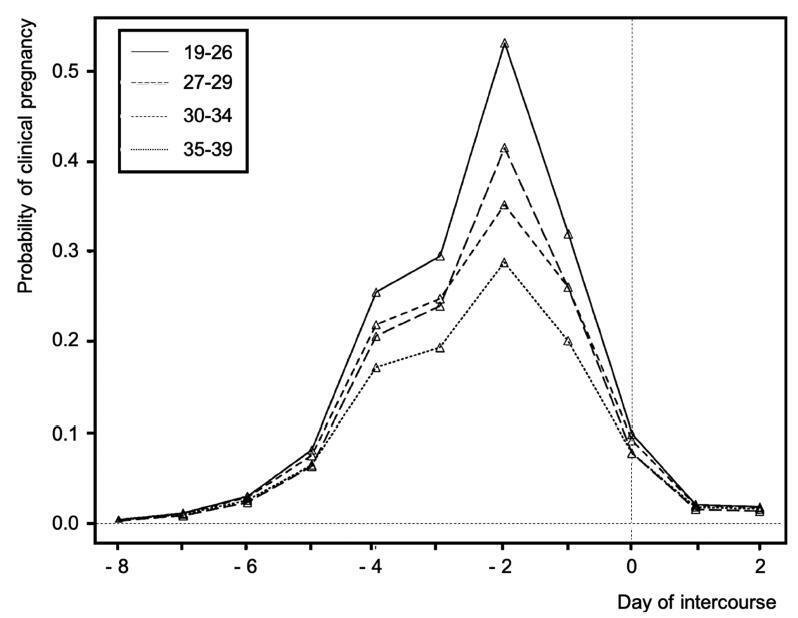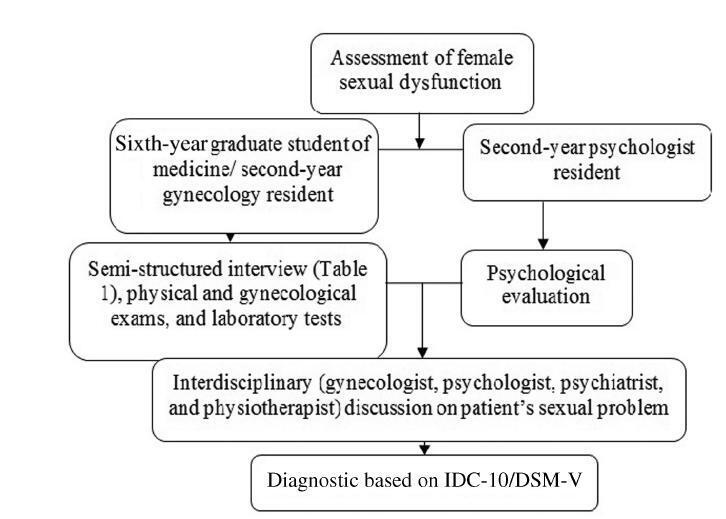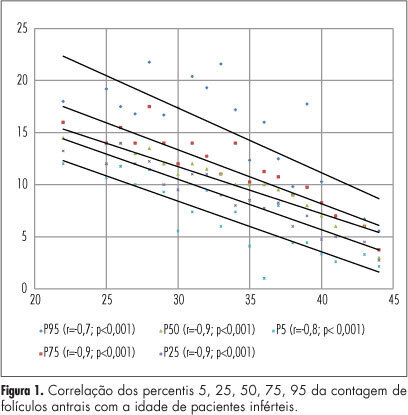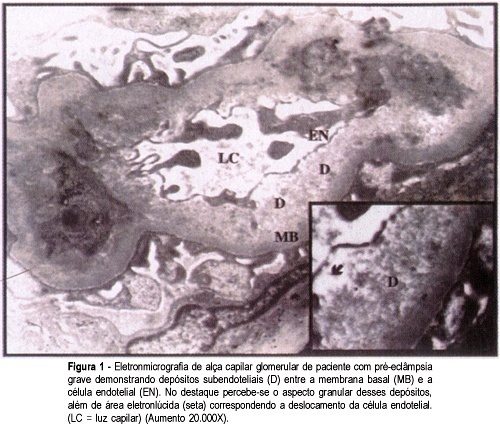Summary
Revista Brasileira de Ginecologia e Obstetrícia. 2019;41(3):183-190
Considering that myths and misconceptions regarding natural procreation spread rapidly in the era of easy access to information and to social networks, adequate counseling about natural fertility and spontaneous conception should be encouraged in any kind of health assistance. Despite the fact that there is no strong-powered evidence about any of the aspects related to natural fertility, literature on how to increase the chances of a spontaneous pregnancy is available. In the present article, the Brazilian Federation of Gynecology and Obstetrics Associations (FEBRASGO, in the Portuguese acronym) Committee on Endocrine Gynecology provides suggestions to optimize counseling for non-infertile people attempting spontaneous conception.

Summary
Revista Brasileira de Ginecologia e Obstetrícia. 2017;39(4):184-194
Sexual pleasure is fundamental for the maintenance of health and well-being, but it may be adversely affected by medical and psychosocial conditions. Many patients only feel that their health is fully restored after they resume normal sexual activities. Any discussion of sexuality in a doctor's office is typically limited, mainly because of a lack of models or protocols available to guide the discussion of the topic.
To present a model designed to guide gynecologists in the management of female sexual complaints.
This study presents a protocol used to assess women's sexual problems. A semi-structured interview is used to assess sexual function, and the teaching, orienting and permitting (TOP) intervention model that was designed to guide gynecologists in the management of sexual complaints.
The use of protocols may facilitate the discussion of sexual issues in gynecological settings, and has the potential to provide an effective approach to the complex aspects of sexual dysfunction in women. The TOP model has three phases: teaching the sexual response, in which the gynecologist explains the physiology of the female sexual response, and focuses on the three main phases thereof (desire, excitement and orgasm); orienting a woman toward sexual health, in which sexual education is used to provide information on the concept and healthy experience of sexuality; and permitting and stimulating sexual pleasure, which is based on the assumption that sexual pleasure is an individual right and is important for the physical and emotional well-being.
The use of protocols may provide an effective approach to deal with female sexual dysfunction in gynecological offices.

Summary
Revista Brasileira de Ginecologia e Obstetrícia. 2012;34(4):184-188
DOI 10.1590/S0100-72032012000400008
PURPOSE: To produce age-related nomograms for ovarian antral follicle count (AFC) in infertile women. METHODS: It was done a cross-sectional study of patients attended in the center of assisted reproduction Fêmina, from March 2010 to October 2011. The patients were submitted to transvaginal ultrasonography from day 2 to day 4 of their menstrual period. Patients included were between 21 to 45 years old, with regular menses, two healthy ovaries, without any evidence of endocrinopathies and who gave written informed consent. Patients excluded were smokers, with galactosemia or ovarian cysts, with antecedents of liver disease, ovarian surgeries or who were treated with chemotherapy or radiotherapy. In order to check the evolution of the AFC in relation to patient age, we used the 5th, 25th, 50th, 75th and 95th percentiles. Linear regression was carried out using these percentiles, permitting us to determine the effect of age on the CFA. RESULTS: A total of 172 patients with a mean age of 32.7 years were included in the trial. The male and tubal factors were the main causes of infertility, accounting for 65% of cases. The age-related nomogram for the 5th, 25th, 50th, 75th and 95th percentiles of AFC revealed that changes were best fitted by a linear function. The percentiles that showed the highest correlations were 25 (r=-0.9; p<0.001), 50 (r=-0.9; p<0.001) and 75 (r=-0.9; p<0.001). CONCLUSION: A nomogram was constructed correlating age with the different AFC percentiles in infertile women without endocrinopathies. This showed a linear pattern of decline in AFC with age in all percentiles. These nomograms could provide a reference guide for the clinician. However, future validation, with longitudinal data, still is needed.

Summary
Revista Brasileira de Ginecologia e Obstetrícia. 2010;32(4):184-190
DOI 10.1590/S0100-72032010000400006
PURPOSE: to analyze the clinical and epidemiological profile, the outcome of pregnancy and the vertical transmission of human immunodeficiency virus (HIV)-infected pregnant women receiving prenatal care at the University Hospital of Santa Maria (HUSM). METHODS: A prospective study was conducted on 139 HIV-infected pregnant women attended at the High-Risk Prenatal Care Outpatient Clinic of HUSM, during the period from August 2002 to August 2007, with at least two prenatal visits in this service. Data were collected by an interview and by filling out a research protocol during a prenatal visit. The protocol was attached to the medical records of the patient and kept until the outcome of gestation. Descriptive analysis of quantitative variables was performed using the SPSS software, version 15.0. RESULTS: The mean age of the 139 pregnant women studied was 25.6 years (±5.8), 79 (56.8%) were white, 81 (58.5%) were married or lived in a stable union, and 90 (65.0%) had less than eight years of schooling. Fifty-one percent of the pregnant women already had two or more children, with a number of children higher than the mean for the state. The infection was diagnosed during the present or a previous pregnancy in more than 70.0% cases. Sexual exposure occurred in 97.0%, and in 59.6% of cases the partner was known to be infected. During the study period, among the cases properly monitored, only one newborn (0.7%) was infected with HIV. CONCLUSIONS: Young women in a socioeconomic situation of vulnerability, with low schooling and multiparous represent the majority of HIV-positive pregnant women attended at the service. Evaluations performed during the prenatal period were relevant for the diagnosis of infection in most cases. An early diagnosis associated with proper clinical, obstetrical and psychological monitoring and with nursing care is important to provide appropriate treatment compliance and a reduction of the rates of vertical transmission.
Summary
Revista Brasileira de Ginecologia e Obstetrícia. 2021;43(3):185-189
The objective of the present study was to analyze the reasons that led to hormone therapies (HTs) regimen changes in women with breast cancer.
This was a retrospective cross-sectional study from a single-institution Brazilian cancer center with patient records diagnosed with breast cancer between January 2012 and January 2017.
From 1,555 women who were in treatment with HT, 213 (13.7%) women had HT switched, either tamoxifen to anastrozole or vice-versa. Most women included in the present study who switched HT were > 50 years old, postmenopausal, Caucasian, and had at least one comorbidity. From the group with therapy change, ‘disease progression’ was reason of change in 124 (58.2%) cases, and in 65 (30.5%) patients, ‘presence of side effects’ was the reason. From those women who suffered with side effects, 24 (36.9%) had comorbidities.
The present study demonstrated a low rate of HT switch of tamoxifen to anastrozole. Among the reasons for changing therapy, the most common was disease progression, which includes cancer recurrence, metastasis or increased tumor. Side effects were second; furthermore, age and comorbidities are risk factors for side effects.
Summary
Revista Brasileira de Ginecologia e Obstetrícia. 2004;26(3):185-192
DOI 10.1590/S0100-72032004000300003
PURPOSE: to investigate the glomerular alterations in patients with severe preeclampsia, as well as to evaluate the evolution of these lesions, relating them to the moment of the renal biopsy. METHODS: seventy-two pregnant women with hypertensive syndrome underwent renal biopsy in the puerperium. Appropriate samples for electron microscopic examination were obtained from 39 patients and grouped as follows: 25 with preeclampsia and 14 with superimposed preeclampsia. Biopsy findings were classified into: normal kidney, endothelial cell edema, mesangial expansion, mesangial interposition, subendothelial fibrinoid deposits, and podocyte fusion. RESULTS: the most frequent alterations found in both groups were subendothelial fibrinoid deposits and podocyte fusion. Endothelial edema was present in 84% of the preeclampsia patients and in 92.9% of the superimposed preeclampsia cases. There was no association between the degree of hypertension and the severity of endothelial edema. A tendency to mesangial interposition was observed in patients who had a biopsy after the seventh day after delivery. Podocyte fusion showed a significant association with 24-hour proteinuria. CONCLUSIONS: the above mentioned glomerular alterations represent a spectrum of complex and dynamic lesions that together represent the ultrastructural characteristics of preeclampsia which should no longer be diagnosed based only on the presence or absence of endothelial edema.

Summary
Revista Brasileira de Ginecologia e Obstetrícia. 2013;35(4):185-191
DOI 10.1590/S0100-72032013000400009
PURPOSE: To evaluate the prevalence and factors associated with intimate partner violence (IPV) among women users of Basic Health Units (BHU) in the State of São Paulo. METHODS: This was a cross-sectional descriptive study based on secondary data analysis of women users' interviews at 75 BHU in the State of São Paulo, from August/2008 to May/2009. We used a questionnaire based on the Abuse Assessment Screen and the Conflict Tactics Scales modified by the Violence Against Women Study (VAW), structured and pre-tested. The variables studied were the types of IPV (psychological, physical and sexual) and sociodemographic variables (age, education, race, paid work, religion, marital status and economic class). We interviewed 2,379 women aged 18 to 60 years. RESULTS: The prevalence of lifetime IPV was 55.7%, and the prevalences of psychological, physical and sexual IPV were 53.8, 32.2 and 12.4%, respectively. Women without a partner but previously married, with schooling <8 years and belonging to the lower economic class had a higher risk for all types of IPV, and other factors were also associated with psychological and sexual IPV. CONCLUSIONS: The prevalence of IPV is high. Healthcare professionals in primary care should make an attempt to detect IPV.